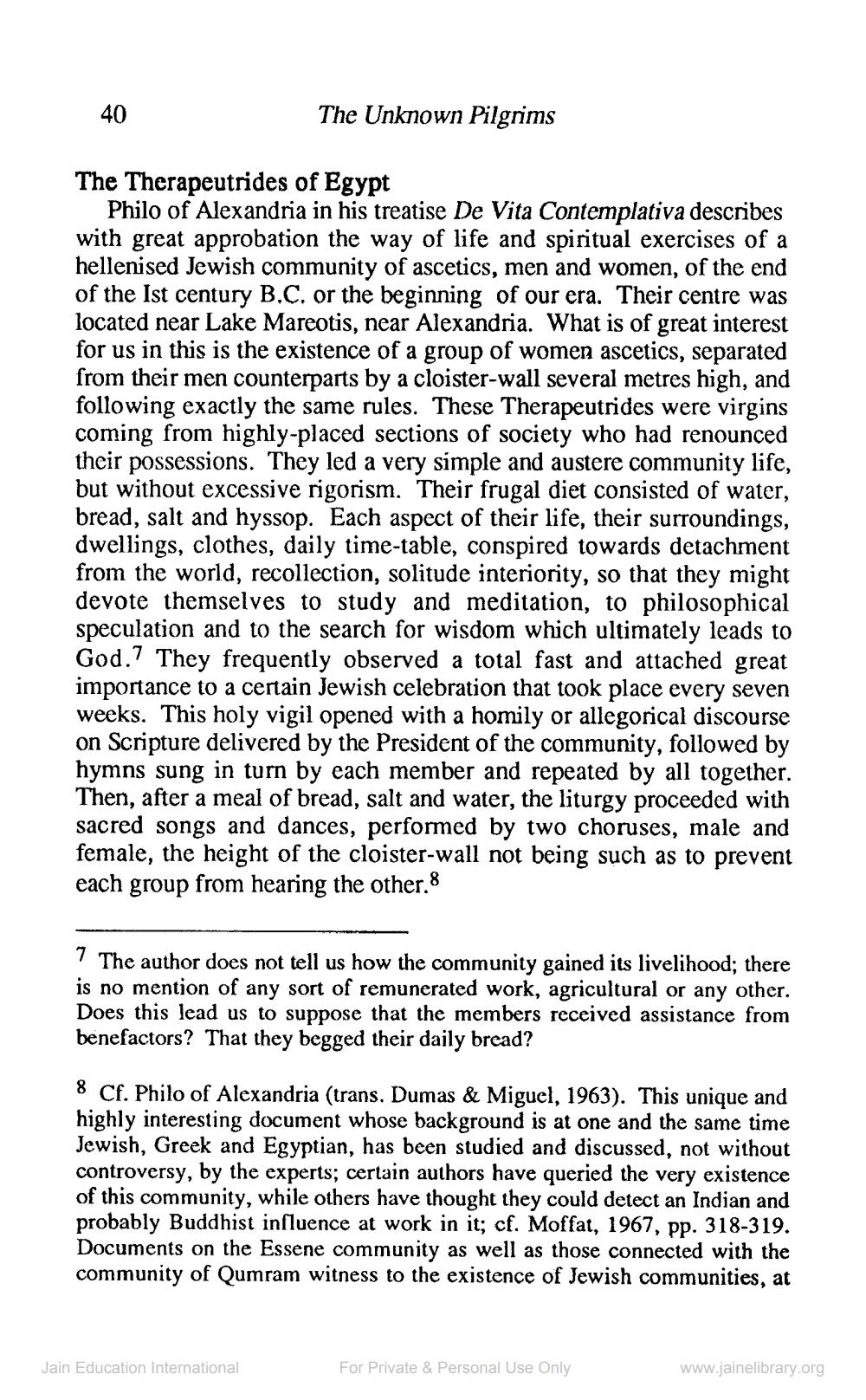________________
40
The Unknown Pilgrims
The Therapeutrides of Egypt
Philo of Alexandria in his treatise De Vita Contemplativa describes with great approbation the way of life and spiritual exercises of a hellenised Jewish community of ascetics, men and women, of the end of the Ist century B.C. or the beginning of our era. Their centre was located near Lake Mareotis, near Alexandria. What is of great interest for us in this is the existence of a group of women ascetics, separated from their men counterparts by a cloister-wall several metres high, and following exactly the same rules. These Therapeutrides were virgins coming from highly-placed sections of society who had renounced their possessions. They led a very simple and austere community life, but without excessive rigorism. Their frugal diet consisted of water, bread, salt and hyssop. Each aspect of their life, their surroundings, dwellings, clothes, daily time-table, conspired towards detachment from the world, recollection, solitude interiority, so that they might devote themselves to study and meditation, to philosophical speculation and to the search for wisdom which ultimately leads to God. They frequently observed a total fast and attached great importance to a certain Jewish celebration that took place every seven weeks. This holy vigil opened with a homily or allegorical discourse on Scripture delivered by the President of the community, followed by hymns sung in turn by each member and repeated by all together. Then, after a meal of bread, salt and water, the liturgy proceeded with sacred songs and dances, performed by two choruses, male and female, the height of the cloister-wall not being such as to prevent each group from hearing the other.8
7 The author does not tell us how the community gained its livelihood; there is no mention of any sort of remunerated work, agricultural or any other. Does this lead us to suppose that the members received assistance from benefactors? That they begged their daily bread?
8 Cf. Philo of Alexandria (trans. Dumas & Miguel, 1963). This unique and highly interesting document whose background is at one and the same time Jewish, Greek and Egyptian, has been studied and discussed, not without controversy, by the experts; certain authors have queried the very existence of this community, while others have thought they could detect an Indian and probably Buddhist influence at work in it; cf. Moffat, 1967, pp. 318-319. Documents on the Essene community as well as those connected with the community of Qumram witness to the existence of Jewish communities, at
Jain Education International
For Private & Personal Use Only
www.jainelibrary.org




